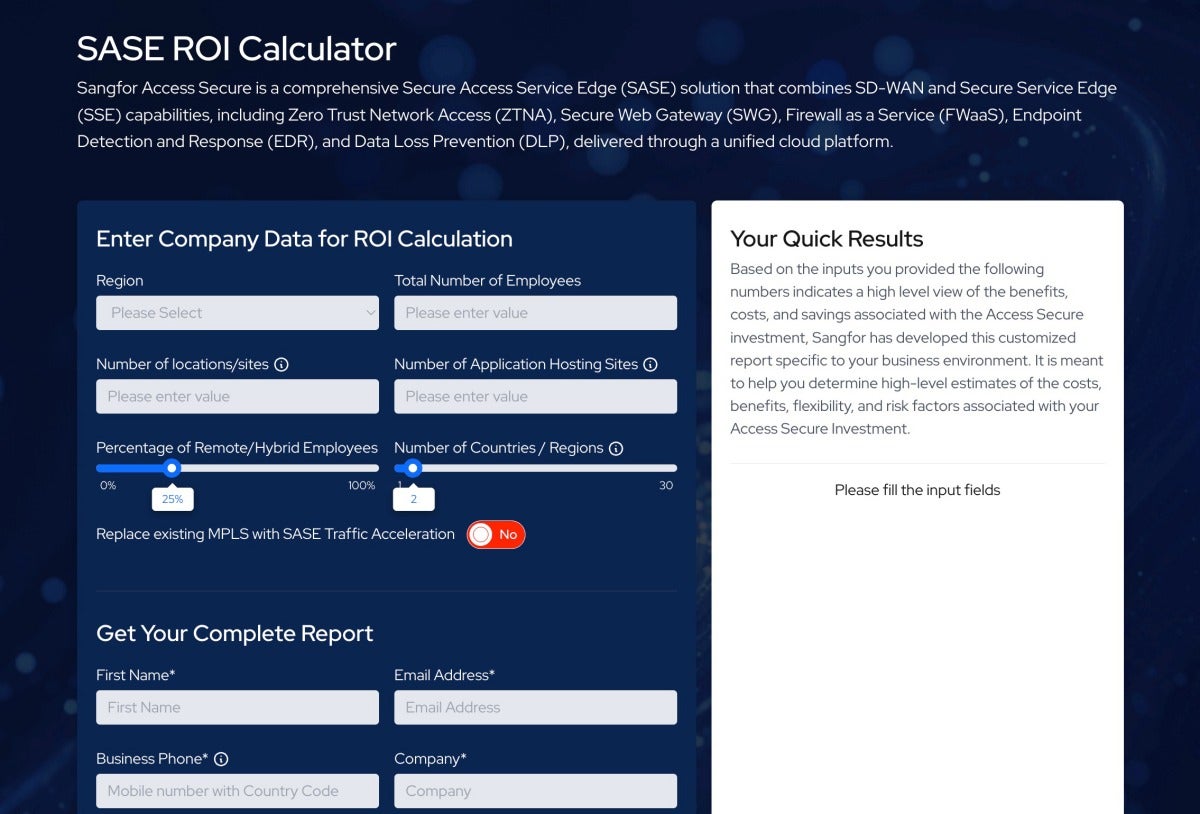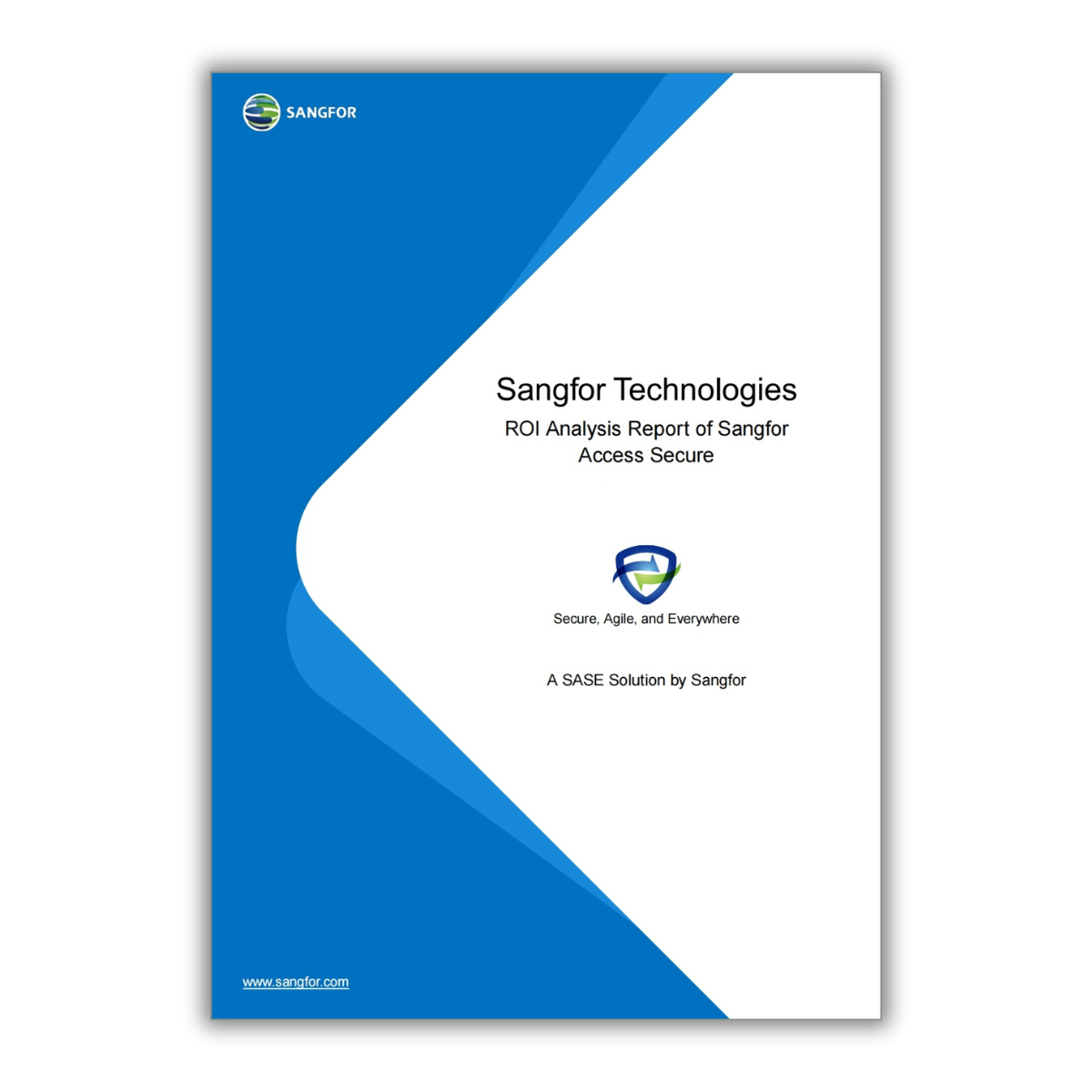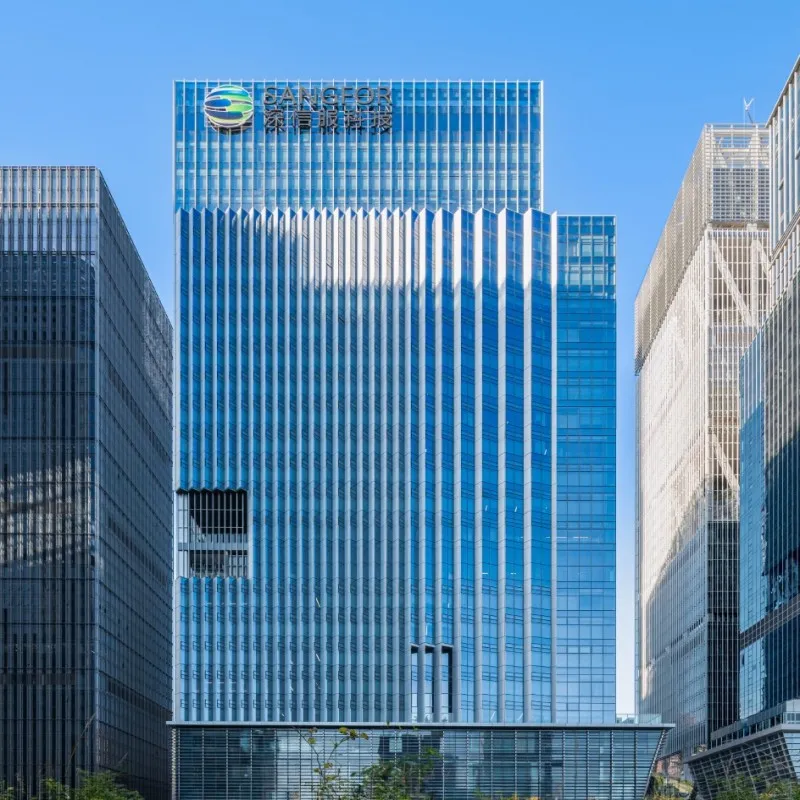In today’s digital landscape, enterprises operate in an Everything as a Service (XaaS) era, with applications distributed across hybrid cloud environments and most employees following a hybrid work model. To maximize business outcomes, it is pivotal to modernize networking and security infrastructure to align with evolving business and digital initiatives.
Secure Access Service Edge (SASE) has emerged as a game-changing framework. It combines networking and security functions into a unified, cloud-native architecture—addressing the growing need for advanced cyber protection and seamless network performance in highly distributed environments.
While CISOs and CIOs are attuned to the benefits of SASE—such as stronger and more consistent security, rapid scalability, higher user efficiency, and significant cost savings—other C-level executives often hesitate to support security projects that require collaboration and financial support from across the organization. Therefore, it is critical for CISOs and CIOs to present a clear and compelling business case for SASE to influence key stakeholders.
CIOs and CISOs can leverage the following strategic talking points to engage executive leadership effectively:
- Position SASE as a business growth enabler: When advocating for SASE, CIOs and CISOs should emphasize its role in driving business value by boosting workforce productivity, accelerating digital transformation, supporting geographic expansion, and ensuring security and compliance.
- Highlight the risk reduction value enabled by SASE: The average cost of a cybersecurity breach globally reached $4.88 million USD in 2024. Security leaders should highlight the heightened risk associated with hybrid work and cloud adoption and demonstrate how SASE reduces the risk surface and the likelihood of costly data breaches.
- Emphasize the cost savings driven by SASE: Non-security executives may express skepticism about the upfront costs of adopting SASE. To overcome such resistance, security leaders should illustrate how SASE reduces costs across IT infrastructure, operations, and resource allocation.
- Present concrete ROI numbers: Highlighting key performance metrics related to revenue and ROI, backed with concrete numbers and a clear execution strategy, to gain broad consensus for SASE projects. It allows non-security executives to envision the future of the organization’s digital infrastructure.
The following sections delve deeper into each of these points, providing practical guidance for CIOs and CISOs on how to frame SASE as a strategic investment in conversations with executive stakeholders.
SASE as a Business Growth Enabler
SASE is more than just a technological framework – it’s a strategic enabler for business growth and market share expansion.
Improved Workforce Productivity
Workforce productivity directly influences organizational efficiency, innovation, and profitability. The modern workforce is increasingly mobile, with employees requiring access to critical applications and resources from anywhere and at any time. SASE ensures consistent security and high-performance connectivity, enabling employees to work without interruptions or lag—whether at home, in the office, or on the move.
By reducing latency and delivering secure connections to on-premises and cloud applications, SASE eliminates networking and security disruptions, fostering a more empowered and efficient workforce.
Accelerating Digital Transformation
In today’s fast-paced, technology-driven world, Digital Transformation (DX) projects are crucial for improving customer experiences, driving operational efficiencies, and unlocking new opportunities. These initiatives often demand a secure, reliable, and agile IT infrastructure – and SASE delivers on all fronts.
By unifying networking (SD-WAN) and security (ZTNA, SWG, CASB, etc.) capabilities, SASE provides a scalable foundation for initiatives like cloud migration, SaaS adoption, and big data integration.
Supporting Geographic Expansion
Geographic expansion is critical for businesses aiming to grow market share, diversify revenue streams, and stay competitive in today’s global marketplace. However, expanding into international markets presents challenges related to connectivity, security, scalability, and regulatory compliance, such as GDPR and CCPA.
SASE addresses these challenges head-on with global SD-WAN connectivity, advanced security features, data loss prevention (DLP), and compliance monitoring. It enables the quick setup of new branches, meets local regulatory requirements, and facilitates the onboarding of remote employees, partners, and global customers. This agility allows organizations to scale faster and adapt to market demands more effectively.
Security and Data Breach Risk Reduction Value
No organization is immune to cyber risk, especially distributed IT enterprises with a large attack surface spanning cloud environments, data centers, branch offices, and remote workers. The following arguments outline how SASE mitigates these risks.
- Zero Trust Network Access (ZTNA): By enforcing Zero Trust Principles, SASE minimizes the attack surface and prevents unauthorized access to sensitive resources. This drastically reduces the risk of insider threats and lateral movement by attackers.
- Advanced Threat Detection: SASE solutions leverage AI-powered threat detection and provide comprehensive visibility into network traffic, enabling rapid identification and containment of cyber threats.
- Data Loss Prevention (DLP): SASE offers granular data control policies to reduce the risk of unauthorized sharing or exfiltration of sensitive data.
- Cloud Security Access Brocker (CASB): SASE solutions protect SaaS access with CASB functionalities, including shadow IT discovery, user behavior monitoring, and granular access control enforcement. This reduces the risk of unauthorized cloud usage and data exposure.
- Unified Security Architecture: Unlike traditional point solutions with disjointed configurations, SASE provides a unified platform to reduce complexity while ensuring consistent policy enforcement. This consolidation minimizes the risk of configuration errors—a common culprit in data breaches.
Cost Savings Driven by SASE
By implementing SASE, organizations can achieve significant cost savings by eliminating infrastructure expenses, streamlining operations, and reducing administrative overhead.
- Infrastructure Consolidation and Simplification: Organizations can significantly reduce their total cost of ownership (TCO) by replacing expensive hardware appliances such as routers, firewalls, VPNs, and MPLS connections. SASE integrates technologies like SWG, ZTNA, FWaaS, CASB, and SD-WAN into a single cloud-delivered solution. This model eliminates vendor management expenses, upfront hardware expenditures, licensing fees, and ongoing maintenance costs of the physical infrastructure.
- Reduced IT Maintenance and Management Costs: IT teams in over 80% of organizations spend considerable time managing software updates, patching servers, resolving routine support tickets, and administering a siloed policy infrastructure, limiting their ability to focus on strategic projects.
With centralized, single-pane-of-glass administration and monitoring, automated updates, and proactive threat prevention capabilities, SASE reduces costly network outages and time spent on mundane technical support and maintenance activities. This allows IT teams to focus on value-generating initiatives, thereby improving the organization’s overall operational cost structure. - Long-Term Scalability and Future-Proofing: As businesses evolve and integrate their cloud-native, data-driven environments with technologies like generative AI, augmented intelligence, and agentic AI, the risk of cyber threats and data breaches increases too. In such situations, SASE’s zero trust principles and cloud DLP capabilities mitigate unauthorized access or sensitive data leaks. SASE’s cloud-native architecture scales seamlessly as the organization expands and supports next-gen use cases like Cyber AI protection or combating Shadow AI without the need for costly hardware upgrades or additional licenses. With SASE, organizations can avoid “technical debt” and ensure they can adopt the latest digital innovations like AI responsibly.
Present Concrete ROI Numbers – with Sangfor Access Secure
The business case for SASE is compelling—it delivers added business value, reduces capital expenditure, and enhances performance, operational efficiency, and overall security posture. To gain buy-in from non-security executives, it’s crucial to clearly communicate the business benefits and financial impact of SASE. However, it is essential to back your claims with concrete numbers and what SASE adoption looks like in practice.
Consider preparing a high-level, phased SASE adoption plan. The following can serve as starting points:
- Define OKRs: Set clear objectives and key results, such as improving network performance, enhancing security, enabling remote work, and reducing costs.
- Assess Your Network and Security Architecture: Evaluate your current state, including cyber readiness, bottlenecks, hardware dependencies, inefficiencies, and compliance requirements.
- Document Key Assets: Identify the number of users, devices, branch locations, data centers, and cloud applications that require connectivity and security.
- Build a Transition Roadmap: Start with low-hanging fruits like replacing VPN with ZTNA.
- Estimate ROI: Use a SASE ROI calculator to project business gains, cost savings, and risk reduction value.
With Sangfor Access Secure, a large enterprise (~5000 users) can expect a return on investment of up to 320%, making it a strong foundation for building a business case. Security leaders can use our SASE ROI Calculator and discover the business gains, cost savings, and risk reduction value that Access Secure can deliver in just a few clicks.

With the rise of AI-powered cyber threats, increased cloud applications, remote work, and the need for geo-diverse scalability, transitioning to SASE is no longer optional for modern enterprises. Sangfor Access Secure ensures financial stability and assurance for organizations of any size. Don’t leave value on the table—Get your customized SASE ROI report today!






